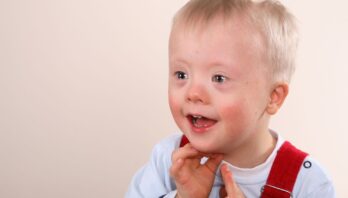Children with disabilities tend to be more isolated, often receive intimate care from multiple caregivers, may not know about personal safety and sexuality, and can be socially invisible. Other risk factors for abuse and neglect that are unique to children with disabilities follow.
Social Bias
- Children and adults with disabilities in our culture have been traditionally treated as being less valuable, invisible, and “different than” others. People with disabilities are still living in institutions, kept apart from the community, and isolated with other people with disabilities and underpaid service providers.
- Children with disabilities are still seen as less trustworthy witnesses to their own abuse.
Opportunity
- Children with physical disabilities may need help with using the toilet, bathing, or dressing. These tasks may require a number of family caregivers or personal attendants.
- Abusers may believe that children with disabilities, particularly children with intellectual disabilities, are easier to trick, bribe, or coerce.
- Social isolation can increase the risk for sexual abuse.
Not Having Information
- Children with disabilities, who are often trained to comply with people in authority, may never have been given permission or the chance to practice saying no.
- Children with disabilities are often seen as being asexual, and not in need of sexuality education that could help them recognize that what is happening is abuse. All children need education about their bodies, sexuality, and how to protect themselves.
Barriers to Reporting
- Children with communication disabilities may have difficulty telling people what happened.
- The stereotype that children (and adults) with disabilities are non-sexual, lacking intelligence, and not credible witnesses means that when abuse is discovered, it may not even be reported.
Lack of Awareness
- Parents, guardians, and disability service providers often do not know the high risks of abuse or recognize signs of abuse.
- Changes in behavior by children with disabilities are often assumed to be related to the disability, rather than a symptom of abuse.
When Children Don't Tell
Children with disabilities may not tell about the abuse for a number of reasons: They may love and want to protect the abuser. They may be frightened by the abuser or frightened of getting in trouble themselves. They may not want to upset the family. They may feel guilty. They may not know that what is happening to them is wrong. Or they simply may not have the ability to communicate what is happening.
- Fear
- Abusers can threaten to hurt the child or their family if they tell anyone about the abuse.
- Children can be afraid that their parents or caregivers will not believe them, or that they will be punished.
- Guilt. The child may feel guilty for “letting” the abuse happen, particularly if some of what the abuser does feels good.
- Manipulation. Abusers can convince the child that they share a rare relationship, and that what the abuser does is because the child is special.
- Lack of awareness. Some children with disabilities don’t realize they are being abused.
- Protection. The child may be afraid of getting the abuser in trouble, particularly if it is a family member, friend, or service provider. Children may not want to upset their parents, guardian, or other family members.
Indirect disclosures. When children do tell, it may be long after the abuse. Or they may tell indirectly. They may test their listener by giving the story in small pieces, or talk about someone else who was hurt, giving hints that are easy to miss.
(Adapted in part from Child Welfare Information Gateway and Davis.)




